For 70 years, until the ascendancy of the motorised lorry and omnibus in the 1920s, the train had been the primary way of making journeys too long for horseback or on foot.
The railway was also the vital means for carrying agricultural produce, fish and livestock from rural and coastal areas to market, and for enabling village shops to carry wider ranges of locally imported goods and provisions.
Mechanisation reduced the numbers working on farms, the nature of rural employment and urban workers’ holiday patterns changed, and so the use of rural branch lines declined.
Then, in an era when it was reckoned that railways should pay their way and not be subsidised by Government, many such lines were closed in the 1960s (some were closed much earlier). Small towns that once had ready access to the national rail network were suddenly left to the whim of the bus operators, and the impact of the private car, van and lorry.
Today we have gone almost full circle. The wider benefits of rail travel are well recognised, and slowly improvements are being sought to improve the lot of those towns and villages still on the railway map.
The excellent work of Community Rail Partnerships all over the country in promoting such lines has been a key factor in this change. So too has many local authorities’ realisation that building more roads to accommodate more cars is not a sustainable answer to the question of how to get commuters into cities from idyllic rural areas, or urban dwellers out to the country or seaside - traffic that benefits local communities through increased visitor spending.
Of course, not all rural railways offer amazing panoramas, while Britain’s superb scenery is not just the monopoly of rural branch lines. It could be argued that all train journeys are scenic in one way or another, and that such vistas add hugely to the enjoyment of the journey.
It can be argued (and indeed is being argued in at least one part of Britain) that the varied views through the carriage window represent an important and free national asset, one that can be marketed to and enjoyed by many more people, to the benefit of areas that have suffered from changes to the way we live over the past century.
In short, railways can be seen not as an isolated drain on public money, but as part of the economic solution.
Railway passengers who spend most of any railway journey looking out of the window and admiring the scenery - be that hills and vales, dramatic seascapes, or post-industrial era townscape - would appear to be a dying breed. Sadly, the majority of rail users these days seem to spend the entire journey either working or relaxing using electronic devices.
Yet it has to be said that whatever part of the British Isles you’re travelling in, the scenery is usually compelling. Those of us who do look out of the window all have our individual ‘most scenic’ lines, and Scotland is likely to feature often - it has more than its fair share of incredible beauty, still to be freely enjoyed through the carriage window.
The Scottish Government, which through Transport Scotland specifies and manages the ScotRail franchise, recognises that it has a wonderful natural asset that can be readily exploited for the benefit of local communities, the environment and the railway itself.
ScotRail operates all of the rail services that are totally within the country, plus the single cross-border service from Glasgow via Dumfries to Carlisle. The new ten-year franchise, operated by the Dutch company Abellio, began on April 1 2015, and ScotRail has rapidly committed to the Great Scenic Railways initiative that it has agreed with Transport Scotland.
The Invitation To Tender (ITT) for this new contract had been issued on January 23 2014, and stated: “As part of a sustainable approach to development, the Scottish Ministers wish to secure benefits for the wider Scottish community. One area that the Scottish Ministers wish to encourage is the promotion of tourism.”
While the ITT nominated only the lines from Glasgow to Oban and from Inverness to Kyle of Lochalsh for this treatment, Abellio’s winning bid took this concept further.
Announcing the new contract in October 2014, Scotland’s then Transport Minister Keith Brown said: “There will be benefits all over the country, with faster services between all our cities, new trains in the Central Belt, and a Great Scenic Railway scheme bringing more tourists to the north, the south west and the Borders.”
Consequently, the Far North line to Wick and Thurso, the West Highland Line to Mallaig, the newly re-opened Edinburgh-Tweedbank Borders line, and the Glasgow-Ayr-Stranraer line through Burns Country have joined Oban and Kyle in Abellio’s Great Scenic Railway Journeys (GSRJ) proposals.
“We have some fantastic routes where we have not been maximising the potential,” says Nesta Gilliland, ScotRail’s recently appointed head of marketing and sales.
“They are all magnificent, and attract a wide range of people - business, tourists and locals. What we are doing is trying to enhance the travel experience.”
As well as upgrading ScotRail’s fleet of Class 158 diesel units to the ‘scenic configuration’, Gilliland says the plan is to have travel ambassadors on board many of the services on the six GSRJ routes. These professionally trained and paid guides would be on hand to describe to passengers the various points of interest visible from the train (or potentially visible should the weather not be sparkling!), and to answer questions.
The end-to-end journey times on some of these routes are quite long, and so distinctive on-train catering will be available.
“We hope that mini-hampers of locally produced food will be delivered to the train, which passengers can order when booking their tickets,” says Gilliland.
All scenic trains will also offer mobile WiFi, available for use where cellular signals are present. In addition, entertainment could be provided on some trains using on-board technology so that passengers can access specially developed local information as the journey proceeds, driven by GPS positioning data and delivered on their mobile device screen.
“We are also collaborating with VisitScotland and the National Trust for Scotland, to be able to access the very rich tourist-related information that they hold,” adds Gilliland.
Of course, marketing the railway in this internet and social media age is vastly different from the days (not very long ago) when it was all down to a scatter-gun approach of basic leaflets and the occasional promotional poster.
Today, a high-tech and carefully produced website can easily attract the attention of individual tourists and tour operators from as far away as San Francisco, Shanghai or Sydney, who can be readily persuaded to consider adding a day (or three) on Scotland’s railways to their ‘Visit Beautiful Britain’ tour. Despite a necessarily restricted railway marketing budget, far wider (yet targeted) exposure can now be achieved.
Gilliland notes that the GSR lines have “very broad appeal. Whether you are a tourist, a commuter or on business… there’s something for everybody.”
Much information useful for planning visits to Scotland can already be found on the VisitScotland website, which will later include Great Scenic Railway Journeys links. Meanwhile, a “joined-up” collaborative effort involving Transport Scotland and local authorities will bring together “rail services, information on attractions, places to stay and places to eat, and an events calendar for any particular place or area - a one-stop shop”.
The key to launching this ambitious product is having all the elements both available and guaranteed. If a tourist boards the train and finds it is not of the refurbished Scenic Train standard but something less appealing, substituted for the operator’s convenience, then web sites such as TripAdvisor will soon reflect the disappointment, and the whole marketing effort is jeopardised.
Therefore, while discussions continue on food baskets, ambassadors and websites, the launch of the GSRJ initiative will not be until 2017. By this time, ScotRail’s entire fleet of Class 158s will have been refurbished to provide the requisite on-train quality.
The initiative involves close collaboration with several bodies, notably VisitScotland. As well as improving rail revenues, the aim is to boost visitor numbers at hotels and B&Bs, pubs and coffee shops, tourist attractions, and all manner of such places along the five lines.
To this end, ScotRail Head of Communications Clare Todd notes the great interest being shown locally in the re-opening of the Borders line from Edinburgh to Tweedbank, with jobs already created ahead of the first train’s arrival.
And one example of what is happening on the Borders line illustrates the potential for the other GSRJ routes.
The service to Tweedbank starts at Edinburgh Waverley station, that name being taken from Sir Walter Scott’s first novel Waverley (published in 1814), and a name also given to the full 98-mile line from Edinburgh to Carlisle (of which the now re-opened section to Tweedbank forms the northerly 35 miles).
At certain times a coach will meet the train from Edinburgh and take passengers on to Abbotsford (Scott’s nearby home) for the complete tourist experience. Similarly, Melrose Abbey, a key 14th century attraction also close to Tweedbank, is to be linked to the railway.
Todd says that many local businesses have been working with ScotRail and Transport Scotland to maximise the benefits the railway will bring to them and their communities. And with world-class scenery and a first-class product, the same benefits should soon develop along the other GSRJ routes.
As for the refurbished trains that will carry these expectant tourists, ScotRail has a fleet of 40 two-car Class 158 diesel units, built around 1990 and owned by train leasing company Porterbrook.
Twenty-five of these were refurbished in a £9 million project in 2007-08, and are based at Inverness for use on the Far North and Kyle lines.
The remaining 15 are based at Edinburgh Haymarket depot, and are now to be brought up to the standard of the 25. This includes new seating and LED lighting, power points, increased luggage and cycle space, refurbished toilets, and new interior and exterior ‘ScotRail’ branding (specified by Transport Scotland), plus a host of reliability improvements.
Seating is generally arranged to align with windows, and there will be more tables than before, although unfortunately today’s regulations demand a high seatback, meaning that passengers have a restricted view forwards and cannot see a panorama.
Radio Token Block (RTB) equipment is also to be fitted to these Class 158s, to enable them to operate on the West Highland, Far North and Kyle lines.
Additionally, all 40 ‘158s’ are to have a series of improvements to make them ‘targeted compliant’ with the post-2019 disability regulations (PRM-TSI - Persons of Reduced Mobility - Technical Specification for Interoperability). ScotRail Fleet Projects and Contracts Manager Chris Tait says this includes improved handrails and toilet operation, wheelchair ramps and two spaces for wheelchairs. An automatic passenger count system will also be fitted.
“Essentially, when the passengers see the train, it will look like a new one,” says Tait.
The first of these refurbished units (158701), was due out of Glasgow’s Springburn works on September 2, and when the project is complete the 40 Class 158s will have a ‘go anywhere’ capability on the GSRJ routes. The size of the homogenous ‘158’ fleet will also allow ScotRail to run four-car sets when there is the demand and where operationally permitted.
Meanwhile, although not linked in any way with the Scenic Trains initiative, the arrival in Scotland of 27 refurbished High Speed Trains will greatly add to the quality experienced by passengers on rail journeys between Scotland’s seven cities.
The introduction of these trains is presently planned for June-December 2018, and is dependent on them being released by First Great Western as electrification is completed between London and Bristol/Oxford. The HSTs will displace Class 170 diesel units on services from Edinburgh and Glasgow to Stirling, Perth, Dundee, Aberdeen and Inverness.
Before these trains enter service - there will be 14 four-car sets (two power cars plus four carriages) and 13 five-car sets (2+5) - they will be fully refurbished with new seats and tables, new floor coverings and carpets, re-coated ceilings, WiFi and power sockets, improved LED lighting, and the exterior slam doors will be replaced by power-operated ones (in line with the PRM-TSI regulations).
As this issue of RAIL went to press, ScotRail was in the final stages of deciding which system to adopt for the doors. Vehicle owner Angel Trains has offered two design options - a sliding door (as used on Class 376 Electrostars) or plug door (as fitted to Chiltern Railways’ Mk 3 coaches). The design, manufacture and testing of the doors is first on the critical path for service introduction, says ScotRail, with the selection of a contractor imminent.
As well as giving passengers a third more seats than offered by the current trains on these routes, plus extra legroom and the HSTs’ renowned smooth and quiet ride, these HSTs will also have additional luggage storage and ample space for bicycles and sports equipment (including skis and golf clubs).
There will also be a galley and buffet area on each train, along with an at-seat trolley service. As with the Scenic Trains, the emphasis will be on Scottish produce. One carriage in each set will be First Class, with all seats having a table.
Some useful journey time improvements are planned. For example, between Inverness and Glasgow/Edinburgh journeys will be an average of 10-12 minutes quicker, and the fastest journeys between Glasgow and Inverness will fall to below three hours.
Coupled with the greatly improved ambience, this is designed to effect a major step change to inter-city rail travel in Scotland, on what are not only key business services but also strikingly scenic routes in their own right.
Nor has ScotRail’s fleet of Class 156 diesel units been forgotten. Tait says they will receive a full interior rebranding, including new seat covers and WiFi, and all the necessary modifications to make them PRM-TSI compliant, including the same type of toilet as fitted to the HSTs.
Thirty-eight of ScotRail’s ‘156s’ will receive this upgrade, and the remaining nine will come off-lease in 2018. The Class 170s displaced by the HSTs will be used on shorter (non-electrified) services, largely in the Central Belt.
Throughout Scotland, increased community involvement is intended to form a key aspect of the Scenic Trains initiative.
Community Rail Partnerships (CRPs), the formal link between community groups and the railway aimed at improving railway patronage in specific areas, are a key part of the industry across Britain, and in many places have been spectacularly successful in promoting local lines.
There are already seven CRPs in Scotland, and ScotRail has plans to at least double this number over the next few years. At the heart of any CRP is a considerable amount of volunteer effort, and ScotRail has a new programme - the ScotRail Deal - for rewarding such commitment. A £1 million ScotRail in the Community fund embraces all these activities.
The train operator is also continuing the Adopt-a-Station programme - it is not only putting strong emphasis on the exterior appearance of stations and platforms, it is also enthusiastic about the potential for returning station buildings to use for the benefit of communities,
Elaine Bell, head of corporate social responsibility and community, says 270 of ScotRail’s 346 stations have adopters. And new technology, in the shape of the ‘SnapIt’ app, will soon allow these adopters to report any fault or damage at their stations almost instantly.
Meanwhile, the Station Regeneration Fund continues. In allocating such money, Bell says ScotRail “will be looking at how any proposal will financially impact on the community. For example, if there is tourism potential in the area, a tourist office could be opened at the station with the community’s support.”
Schoolchildren will also be encouraged in some areas to learn about the railway, with the introduction of a travelling classroom, in which they can learn about the local history, geography and scenery they see through the carriage windows. They will also have the opportunity to become more familiar with travelling by train more generally, through the School Safety programme run in conjunction with Network Rail.
And people who find it difficult to travel by train - for example, because of disability or age - will also be helped. Special courses will be run to address such hurdles, using either the travelling classroom or a facility at ScotRail’s offices.
Significant focus is being placed on developing CRPs, in line with the guidance given in the franchise ITT. Two ScotRail-employed Community Liaison Executives - Bridie Casey and Lindley Kirkpatrick - have been appointed to provide a link between the railway and the CRPs and the wider communities (such as schools and businesses), to act as ‘community ambassadors’, and to support (but not run) the CRPs. This is a wider role than was performed by the previous Association of Community Rail Partnerships-sponsored development officers.
ScotRail fully realises that it has a great many skills in-house that could be brought to bear to improve the success of its CRPs - for example, this summer it is holding a workshop to help CRP volunteers create better websites.
And Bell agrees that the new franchise is “giving CRPs more energy and impetus”, adding: “We’re here to support the CRPs through our own skills as well as funding, while the Community Liaison Executives will help the CRPs find routes towards further external funding.”
One new CRP is in the final stages of approval, and the aim is to form 15 new Partnerships over ten years of this franchise.
The Association of Community Rail Partnerships (ACoRP) is fully behind these propsals.
“Having helped develop the concept of CRPs in Scotland, ACoRP is looking forward to working with ScotRail in the coming years,” General Manager Neil Buxton tells RAIL.
“ScotRail’s angle on community engagement is very much wider than simply developing CRPs, although they will still be a key part of the strategy. Transport Scotland’s aim in setting the franchise was to ensure that the railway and the community became inextricably entwined, to the benefit of both. And the ‘ScotRail in the Community’ project is designed to do just that, covering CRPs, station adoption projects, volunteers, community ambassadors, community regeneration and many other areas of community support.
“This is an exciting time for Scotland, and is the first time that community engagement has been so clearly written into the fabric of a franchise.
“An early opportunity to see this concept in action comes with the re-opening of the Borders Line. While the line was being built, ACoRP was helping to develop a Community Rail Partnership to support the new service. Now services are running, the Borders Railway CRP is ready to support the marketing and is in a position to help develop new and innovative links with the communities the line serves.”
The new ScotRail franchise is embarking on a wide-ranging, three-pronged attack to increase passenger numbers by improving the experience both on trains and at stations, initiatives that take what has been done elsewhere in Britain a step further.
By introducing Scenic Trains and high-specifications HSTs, and in promoting an enthusiastic focus on Community Rail Partnerships and station care and development, the economic health of rural and long-distance railways in Scotland - and more importantly that of the communities they serve - looks set to be significantly enhanced in the coming years.
- This feature was published in RAIL 783 (September 16 - 29 2015)

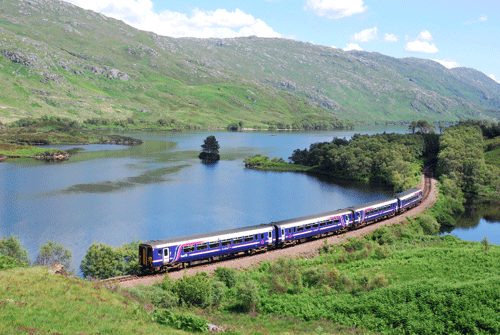
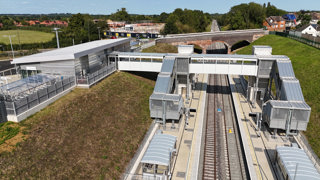
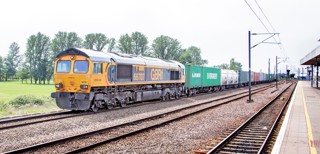

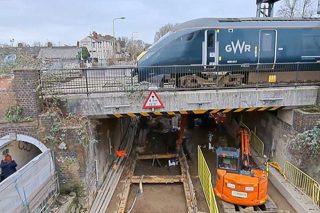
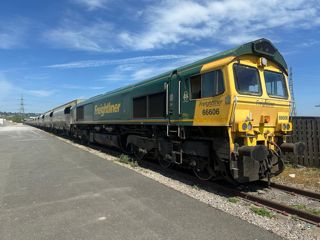




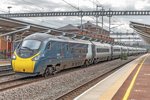







FrankH - 11/06/2016 10:59
Are these so called scenic trains going to be dmu's, if so doomed to failure. They have to spend money on comfortable stock and that'll not happen with the money being spent on the sleeper services.